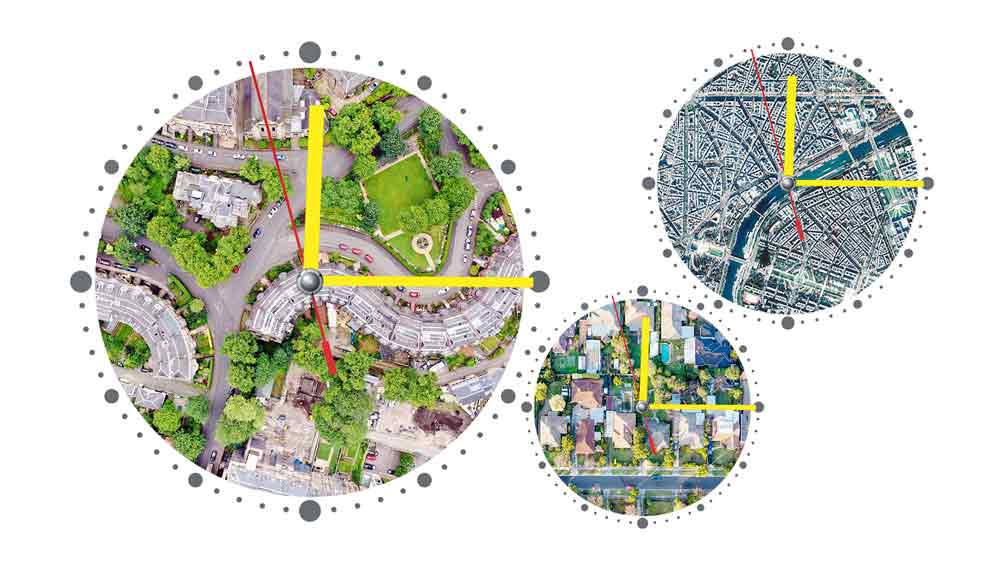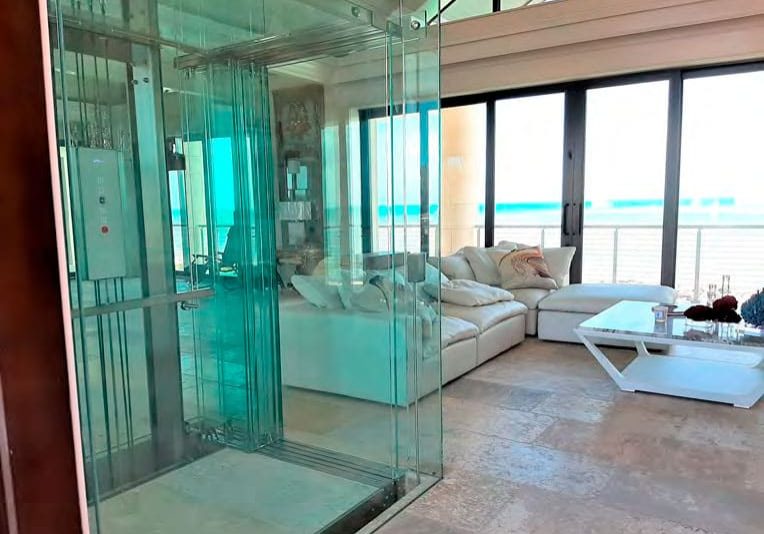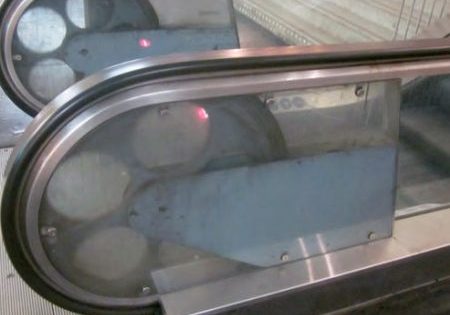A webinar organized by CTBUH Turkey (Council on Tall Buildings and Urban Habitat) titled ‘What Shapes Our Future Cities?’ was presented to its audience on November 5, 2020, offering a comprehensive content.
The webinar provided answers for the question “What Shapes Our Future Cities?” with a competent team on different layers of the topic based on current study data on a global scale. It also brought a new perspective to the participants.
The opening speech was made by Mehmet Kılıç, CTBUH Turkey representative and country manager. Kılıç summarized the founding purpose and the mission of the council:
“CTBUH is a nonprofit organization that provides criteria by developing internationally accepted standards for measuring building heights and recognizes excellence of high-rise buildings all over the world through award programs. It is considered to be the referee for determining the “The Best Tall Building of the World,” though CTBUH does not promote high-rise building projects; rather, it plays an informational role for the sustainability and inhabitability of these buildings.”
Şeyda Taluk, the moderator of the event who is also a political communication and stakeholder engagement expert, pointed out that the architectural structure of the city has been discussed simultaneously with its social structure following the earthquake that hit Izmir on October 30, and emphasized that the earthquake mainly affected low-income groups. She underlined the importance of considering the social layers of the city before providing design and engineering services.
GESI and Social Inclusion in Future Cities
The first topic of the event was “GESI and Social Inclusion in Future Cities.” ARUP Partnerships and Engagements Leader Phil Dowrick explored the concept of social inclusion through the design process of a new bridge that passes through the middle of the city. He emphasized the necessity of considering the needs of all stakeholders of the cities, especially underrepresented groups (minorities, elderly people, women, children, young people, tourists, low-income groups, families, etc.) and touched on “Sustainable Development Goals” based on 17 goals and 169 specific targets prepared by U.N. to be valid between 2015 and 2030. Dowrick stated that, starting with the master plan of the design, “We should not only think of the profiles we know but we should also think of the people who we do not know,” and explained how to make a difference in design under some main items:
1. Use the correct terms. The language has a transformative power. Instead of “Entrance for the Disabled,” the preferred term is “Accessible Entrance.”
2. Use gender-neutral terms, and focus on the person. For example, instead of saying “businessman,” say “businessperson” to neutralize the language.
3. While everyone has access to reading, writing and making phone calls, why can’t they have access to all places in a city? Make spaces where everyone has access.
4. Break myths about diversity. Think about people who are not like you.
Technological Trends in Future Cities
The first speaker of the second theme of the event, “Technological Trends in Future Cities,” was Mehmet Gülez, Ernst & Young Turkey Markets and innovation leader. Gülez gave answers for the question, “Why Sustainable Development?”:
“By 2030, the world is projected to have 662 cities with over 1 million inhabitants and 43 megacities with more that 10 million residents. Today, 55% of the world’s population resides in cities. This figure will rise to 68% by 2050. Urban areas account for more than 70% of global carbon dioxide emissions, and the 100 cities with the greatest footprints account for 18% of global emissions. Additionally, a US$3.7 trillion investment per year is required globally to meet the expected need to modernize infrastructure until 2035.
“Considering these figures, it is obvious that the world cannot use its resources in that way. The ‘Cities of the Future’ in the changing world will collect data on broadband, transportation, energy and environment through the sensors in them, and transfer them to service platforms to interpret through data analysis. Digital identities, city control centers, open data and geographic information systems will play a role in this transfer. Through these data, new education, tourism, ‘governance,’ industrial structures, health infrastructure and new mobility systems for the people will be produced.”
Ersoy Pehlivan, Smart Cities and Communities Leader at Arup Turkey, talked about “Transforming Bursa into a Smart City Project,” within the scope of “Sustainable Development Goals” signed by Turkey and the trends that guided urban transformation and the strategic plan of the city.
The Global Future Cities Prosperity Fund Program in Turkey (PF GFCP Turkey), shared examples and explained the trends that guide the smart city transformation. Summarizing the scope and benefits of the project, Pehlivan shared the activities carried out in this process to the participants. He clarified the primary benefits of “Transforming Bursa into a Smart City Project”: Through this transformation, mobility will be increased thanks to safe, affordable and sustainable transportation systems for everyone. Innovation and data transfer will be provided for inclusive growth. In this way, citizen participation and stakeholder contribution for forming urban development strategies and actions will increase.
Cüneyt Taşkesen, head of the Bursa Metropolitan Municipality Smart Urbanism and Innovation Department, made a presentation on the second topic of the event. Taşkesen explained that the studies were carried out with the U.K.’s Strategic Partner “U.N. Habitat” through the fund provided by the U.K. for the “Future Cities Program.”
Urban Mobility in Future Cities
At the third part of the event, Johnny Ojeil, Transport Planning Leader at Arup Midlands, and Utku Cihan, Head of the Istanbul Metropolitan Municipality Transportation Department, talked about “Urban Mobility in Future Cities.” Ojeil addressed the issue of urban mobility and gave an informative speech about the general scope of “Sustainable Urban Mobility Plans” (SUMP), while sharing examples of good practices in Malmö, Sweden. He underlined that walking, cycling and public transport were the first choice for all who work, live or visit in Malmö. He stated that the accessibility in the city has become attractive and sustainable, creating a social, economic and environmental transformation. Citing Malmö, he emphasized that such planning improves the life quality of the people living in cities, prevents traffic jams and air and noise pollution, addresses climate change, reduces traffic accidents and irregular parking on the streets, provides secure, healthy and flowing mobility for the residents of the city through sustainable transportation choices, and brings positive developments for living quarters and their habitants. Ojeil added that they were in the scenario development phase for their projects in İstanbul.
Cihan said SUMP İstanbul was the first “Sustainable Urban Mobility Plan” of Turkey, and was also the biggest SUMP, with a population of more than 15 million. Cihan emphasized that the general purpose of the study is “to have an accessible, affordable, integrated and inclusive transportation system.” He stated that the plan was to achieve several benefits, including “public transportation for the poorest groups, reducing the share of household budget spent on transportation, increasing urban accessibility, providing equal transportation conditions for disadvantaged groups, reducing greenhouse gas emissions, increasing the number of electric vehicles in public transportation, providing integration, increasing the safety of transport and travel, reducing accident rates, reducing traffic volumes, congestion and car addiction, promoting access to public transport, and promoting being active through walking and cycling.”
Healthy Streets Approach in Future Cities
In the last session, Sertaç Erten, master planning and urban design leader at Arup Turkey, made a presentation to convey the “Healthy Streets Approach in Future Cities.” Emphasizing the public space needs of cities, Erten shared the basic principles of the approach in her presentation, shared the examples of Healthy Streets from around the world and said vehicles like “ginger” and bicycles will dominate the city traffic. Under the theme “Understanding Current Trends to Foresee the Future,” she expounded on how the key streets and squares in Amsterdam, Vienna and New York were pedestrianized gradually.
Erten then examined the “Healthy Streets” project in London, referring to “pedestrianization,” which is one of the subtitles of sustainability in cities. She stated that, within the scope of the project initiated in 2016 by London Mayor Sadiq Khan, it is aimed that 80% of all trips within London will be carried out by walking, cycling and public transport by 2041, and that all residents of London will be on active travel at least for 20 minutes a day. One of the targets of the project is to provide a parking space for 20 bicycles for each 50 m. Erten also explained the “15-Minute City” project and its contributions on sustainability through planning scenarios on regional centers of the city.
Finally, Erten gives some examples from the “Ankara-Çankaya Healthy Streets Project,” which Arup worked on it through the fund provided by the U.K. for the “Future Cities Program.” The four main objectives of the project were to create a greener, more durable, livable and lively district for all. Within this context, the project aims to connect valleys and stream beds, and thus improve urban microclimates, increase the participation of residents, improve the quality of places and services, and strengthen the local economy and stakeholders.
Get more of Elevator World. Sign up for our free e-newsletter.








